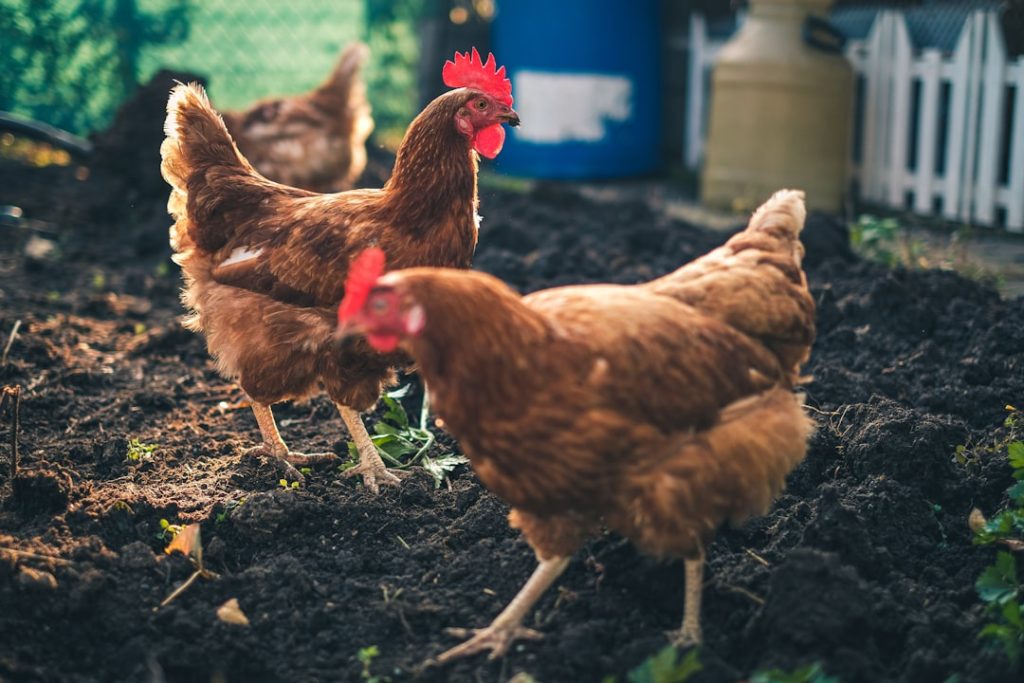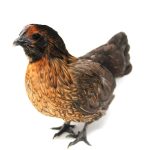When purchasing chicks for raising chickens, two main options are available: straight run and sexed. Straight run chicks are unsexed, providing an equal probability of obtaining male or female chicks. This option is suitable for those interested in breeding chickens or those who are not particular about the gender composition of their flock.
Straight run chicken breeds come in various types, each with distinct characteristics and traits. Understanding the differences between straight run and sexed chicks is crucial when deciding which type to acquire for a flock. Straight run chicken breeds are often preferred by individuals looking to initiate or expand their breeding programs.
By purchasing straight run chicks, breeders can raise both male and female chickens, allowing them to select the best birds for breeding purposes. This approach can be advantageous for those aiming to enhance specific traits within a breed or develop unique crossbreeds. Additionally, straight run chicks are typically less expensive than sexed chicks, making them a more economical choice for large-scale chicken raising operations.
However, it is important to note that raising straight run chicks presents its own set of challenges, as caretakers must be prepared to manage both male and female chickens within their flock.
Table of Contents
- 1 Popular Straight Run Chicken Breeds
- 2 Characteristics of Straight Run Chicken Breeds
- 3 Selecting the Right Straight Run Chicken Breed for Your Flock
- 4 Caring for Straight Run Chicken Breeds
- 5 Challenges of Raising Straight Run Chicken Breeds
- 6 Breeding and Raising Straight Run Chicken Breeds for Profit
- 7 FAQs
Key Takeaways
- Straight run chicken breeds consist of both male and female chicks, and are not sexed at birth.
- Popular straight run chicken breeds include Rhode Island Reds, Barred Plymouth Rocks, and Buff Orpingtons.
- Straight run chicken breeds are known for their hardiness, good egg production, and friendly dispositions.
- When selecting the right straight run chicken breed for your flock, consider factors such as climate, space, and egg production.
- Caring for straight run chicken breeds involves providing proper housing, nutrition, and healthcare to ensure their well-being.
Popular Straight Run Chicken Breeds
Popular Straight Run Chicken Breeds
There are many different straight run chicken breeds to choose from, each with their own unique characteristics and traits. Some of the most popular straight run chicken breeds include the Rhode Island Red, Plymouth Rock, and Leghorn.
Characteristics of Popular Breeds
The Rhode Island Red is known for its excellent egg-laying abilities and friendly disposition, making it a popular choice for backyard chicken enthusiasts. Plymouth Rocks are a dual-purpose breed, meaning they are suitable for both egg production and meat consumption. They are known for their hardiness and adaptability to various climates, making them a great choice for those who are new to raising chickens. Leghorns are another popular straight run breed, known for their prolific egg-laying abilities and active nature.
Other Popular Options
In addition to these breeds, there are many other straight run chicken breeds to choose from, each with their own unique characteristics and traits. Some other popular options include the Australorp, Orpington, and Wyandotte. Australorps are known for their excellent egg-laying abilities and calm temperament, making them a great choice for those who are looking for low-maintenance chickens. Orpingtons are a popular choice for those who are looking for a friendly and docile breed, as they are known for their gentle nature and beautiful plumage. Wyandottes are another popular straight run breed, known for their cold-hardiness and ability to lay eggs consistently throughout the year.
Choosing the Right Breed
With so many options to choose from, it’s important to research each breed carefully to determine which one is the best fit for your specific needs and preferences.
Characteristics of Straight Run Chicken Breeds

Straight run chicken breeds come in a wide variety of shapes, sizes, and colors, each with their own unique characteristics and traits. When selecting a straight run breed for your flock, it’s important to consider factors such as egg-laying abilities, temperament, and cold-hardiness. Some straight run breeds, such as the Leghorn and Australorp, are known for their excellent egg-laying abilities, making them a great choice for those who are looking to have a consistent supply of fresh eggs in their flock.
Other breeds, such as the Orpington and Wyandotte, are known for their friendly and docile nature, making them a great choice for those who are looking for low-maintenance chickens that are easy to handle. In addition to these factors, it’s also important to consider the climate in which you live when selecting a straight run breed for your flock. Some breeds, such as the Plymouth Rock and Wyandotte, are known for their cold-hardiness and ability to thrive in colder climates.
If you live in an area with harsh winters, it’s important to select a breed that is well-suited to these conditions in order to ensure the health and well-being of your flock. By carefully considering these factors and researching the characteristics of each breed, you can select the right straight run chicken breed for your specific needs and preferences.
Selecting the Right Straight Run Chicken Breed for Your Flock
When it comes to selecting the right straight run chicken breed for your flock, there are several factors to consider. First and foremost, it’s important to consider your specific needs and preferences when choosing a breed. If you are primarily interested in egg production, you may want to consider breeds such as the Leghorn or Australorp, which are known for their excellent egg-laying abilities.
On the other hand, if you are looking for a dual-purpose breed that is suitable for both egg production and meat consumption, you may want to consider breeds such as the Plymouth Rock or Orpington. In addition to considering your specific needs and preferences, it’s also important to consider the climate in which you live when selecting a straight run breed for your flock. Some breeds are better suited to colder climates, while others thrive in warmer environments.
By selecting a breed that is well-suited to your climate, you can ensure the health and well-being of your flock. It’s also important to consider the space you have available for your chickens, as some breeds require more room to roam than others. By carefully considering these factors and researching the characteristics of each breed, you can select the right straight run chicken breed for your specific needs and preferences.
Caring for Straight Run Chicken Breeds
Caring for straight run chicken breeds requires attention to detail and a commitment to providing proper care and nutrition for your flock. One of the most important aspects of caring for straight run chicken breeds is providing them with a suitable living environment. This includes providing a secure coop or housing structure that protects them from predators and the elements.
Additionally, it’s important to provide your chickens with access to fresh water at all times, as well as a balanced diet that includes a mix of grains, protein, and essential nutrients. In addition to providing a suitable living environment and proper nutrition, it’s also important to monitor the health of your flock on a regular basis. This includes checking for signs of illness or injury, as well as providing regular vaccinations and preventative care as needed.
It’s also important to provide your chickens with regular opportunities for exercise and socialization, as this can help prevent behavioral issues and promote overall health and well-being. By providing proper care and attention to your straight run chicken breeds, you can ensure that they thrive and provide you with years of enjoyment and productivity.
Challenges of Raising Straight Run Chicken Breeds

Unpredictable Gender Ratios
Since straight run chicks are unsexed, there is an equal chance of getting male or female chicks. This can lead to challenges such as managing aggressive behavior in male chickens or dealing with an overabundance of roosters in your flock. It’s essential to be prepared for these challenges and have a plan in place for managing them effectively.
Breeding Within the Flock
Another challenge of raising straight run chicken breeds is the potential for breeding within your flock. If you are not careful about separating males and females or do not have a plan in place for managing breeding within your flock, you may end up with unwanted or unplanned offspring. This can lead to overcrowding in your coop or housing structure, as well as potential health issues related to inbreeding.
Being Proactive
It’s crucial to be proactive about managing breeding within your flock and have a plan in place for dealing with any unexpected offspring that may arise. By being prepared and taking the necessary steps, you can minimize the challenges associated with raising straight run chicken breeds and enjoy a successful and rewarding experience.
Breeding and Raising Straight Run Chicken Breeds for Profit
For those who are interested in breeding and raising straight run chicken breeds for profit, there are several key factors to consider. First and foremost, it’s important to have a clear understanding of the market demand for specific breeds or types of chickens. This can help you determine which breeds are most likely to be profitable and in high demand within your local area or region.
Additionally, it’s important to have a solid understanding of breeding techniques and practices in order to produce high-quality offspring that meet market demand. In addition to understanding market demand and breeding techniques, it’s also important to have a solid business plan in place for breeding and raising straight run chicken breeds for profit. This includes considerations such as start-up costs, ongoing expenses related to feed and care, as well as potential revenue streams from selling eggs, meat, or live birds.
By carefully considering these factors and having a clear plan in place, you can increase your chances of success when breeding and raising straight run chicken breeds for profit. In conclusion, raising straight run chicken breeds can be a rewarding experience that provides you with fresh eggs, meat, or even potential profit if done correctly. By understanding the different types of straight run chicken breeds available, selecting the right breed for your specific needs, providing proper care and nutrition, being prepared for potential challenges, and having a solid business plan in place if breeding for profit – you can ensure that your experience raising straight run chicken breeds is successful and fulfilling.
If you’re interested in learning more about different chicken breeds, you might want to check out this article on the best chicken breeds for a farmhouse chicken coop. It provides valuable information on various breeds that are well-suited for a farmhouse setting and can thrive in that environment.
FAQs
What are straight run chicken breeds?
Straight run chicken breeds are those that have not been sexed or separated by gender. When you purchase straight run chicks, you will receive a mix of male and female chicks.
What are some examples of straight run chicken breeds?
Some examples of straight run chicken breeds include Rhode Island Reds, Barred Plymouth Rocks, and Buff Orpingtons.
How can you tell the gender of straight run chicks?
It can be difficult to determine the gender of straight run chicks until they start to develop secondary sexual characteristics, such as comb size and feather color. Some breeders may be able to provide guidance based on their experience with the specific breed.
What are the advantages of raising straight run chickens?
Raising straight run chickens can be more cost-effective, as straight run chicks are often less expensive than sexed chicks. Additionally, raising straight run chickens allows for a more natural and diverse flock, which can be beneficial for overall flock health and dynamics.
Are there any disadvantages to raising straight run chickens?
One potential disadvantage of raising straight run chickens is the unpredictability of the gender ratio in the flock. If you are specifically looking to raise hens for egg production, you may end up with more roosters than desired. Additionally, roosters can be more aggressive and may require separate housing if they become territorial.
Meet Walter, the feathered-friend fanatic of Florida! Nestled in the sunshine state, Walter struts through life with his feathered companions, clucking his way to happiness. With a coop that’s fancier than a five-star hotel, he’s the Don Juan of the chicken world. When he’s not teaching his hens to do the cha-cha, you’ll find him in a heated debate with his prized rooster, Sir Clucks-a-Lot. Walter’s poultry passion is no yolk; he’s the sunny-side-up guy you never knew you needed in your flock of friends!







